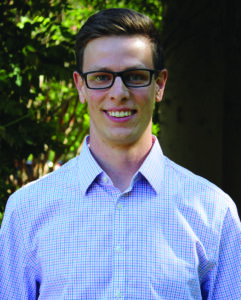Robotics Research and Education in the University of Utah’s Department of Mechanical Engineering has close ties with the School of Computing. The research program focuses on design, construction, operation, and use of robots. Core strengths include healthcare robotics, bioinspired design and control, manipulation and motion control, physical human robot interaction, micro/nano robotics, haptic interfaces, VR interfaces, and teleoperation. You can find out more about the Robotics Track here.
Faculty and Labs

Jake Abbott
Lab – Magnetic and Medical Robotics Laboratory
Interested in robotic systems that manipulate remote environments, with a primary focus on medical applications. Many of our systems utilize magnetic fields to manipulate objects without any direct physical contact. Many of our systems utilize the intelligence of a human operator directly in the control loop, and as such are designed to assist humans rather than replace them. Many of our systems utilize the human sense of touch, which is the field broadly known as “haptics”.

Edoardo Battaglia
Lab – Human-Centered Haptics And Robotics
We focus on the design and evaluation of robotic and mechatronic systems for human-focused applications, such as sensing of kinematic and interaction forces, haptic feedback and training and assistive tasks. Our vision is to create devices that will be functional not just from an engineering point of view, but also from a user-centered perspective, with the goal of creating technology that will be intuitive to use, and as unobtrusive as possible. We target applications in high-impact settings such as medical care and diagnosis, training and virtual/augmented reality.
Yong Lin Kong
Lab – Additive Manufacturing Laboratory

Kam Leang
Lab – Design, Automation, Robotics & Control
Tommaso Lenzi
Lab – HGN Lab for Bionic Engineering
Focuses on the intersection of Robotics, Design, Control, and Biomechanics. We invent, prototype, engineer, and test bionic devices and systems to help people move and live independently.

Stephen Mascaro
Lab – BioRobotics
BioInstrumentation, BioManipulation, and BioInspiration are the core focus areas of our research. These three focus areas are consistent the with theme of the IGERT program on Biocentric Robotics, which complements the Robotics Track here at University of Utah.

Mark Minor
Lab Website – Robotic Systems
We synergize design, modeling, and control of robotic systems to arrive at novel embodiments that provide new levels of adaptability, mobility, and immersion that would not otherwise be possible. We have extensive expertise with design and control of under-actuated nonholonomic systems, kinematic motion control, dynamic motion control, state estimation, sensor development, and data fusion.
Robert G. Parker
Lab – Dynamics & Vibrations
Pursues research that merges academic investigations suitable for publication in leading journals with practical applications. While our primary goal is to pursue research valuable for the broad vibration research community, we select projects that are drawn from engineering applications. We pursue these goals while giving PhD and MS students in the lab academically exciting projects for them to develop their independent research skills and prepare for their future careers.

Erika Pliner
Lab – Neuroergonomics & Occupational Biomechanics Laboratory
We focus our core competencies on biomechanics, neuroscience, and ergonomics to improve personal and occupational safety. We design experiments that leverage wearable systems to characterize the complexity of human-environment interactions. This knowledge is applied towards interventions for safe and effective activity.

Shad Roundy
Integrated Self-Powered Sensing
Focuses on wireless sensing systems including energy harvesting power sources (from vibrations and human motion), wireless power transfer (magnetic and ultrasonic), micro-sensors, and applications of wireless sensors. The connecting theme of our work is the intersection of electromechanical system design and dynamics. In short, we design, analyze, build, and characterize small-scale electromechanical systems.

Scott Uhlrich
Lab – Movement Bioengineering Lab
We design wearable devices and mobile sensing algorithms that improve human mobility through the integration of biomechanics, machine learning, computer vision, wearables, and robotics. Applications include screening for injury risk using smartphone video, reducing joint pain from osteoarthritis using wearables, and creating video-based biomarkers of movement health for neuromuscular diseases.

Haohan Zhang
Lab – Utah Wearable Robotics Laboratory
We specialize in wearable robotic solutions by leveraging mechanism design and modern computational methods. We strive to understand the sensorimotor system through experiments using wearable robotic platforms. Our laboratory aspires to make a positive impact on daily living of individuals with motor impairments through increased independence and social inclusion.


